Six simple rituals for more winning:
 time: 22:11:00
time: 22:11:00 1. Drink a glass of water when you wake up. Your body loses water while you sleep, so you’re naturally dehydrated in the morning. A glass of water when you wake helps start your day fresh.
2. Define your top 3. Every morning ask yourself, “What are the top three most important tasks that I will complete today?” Prioritizes your day accordingly and don’t sleep until the Top 3 are complete.
3. The 50/10 Rule. Solo-task and do more faster by working in 50/10 increments. Use a timer to work for 50 minutes on only one important task with 10 minute breaks in between. Spend your 10 minutes getting away from your desk, going outside, calling friends, meditating, or grabbing a glass of water.
4. Move and sweat daily. Regular movement keeps us healthy and alert. It boosts energy and mood, and relieves stress.
5. Express gratitude. Gratitude fosters happiness. Each morning, think of at least five things you’re thankful for. In times of stress, pause and reflect on these things.
6. Reflect daily. Bring closure to your day through 10 minutes of reflection. Asks yourself, “What went well?” and “What needs improvement?
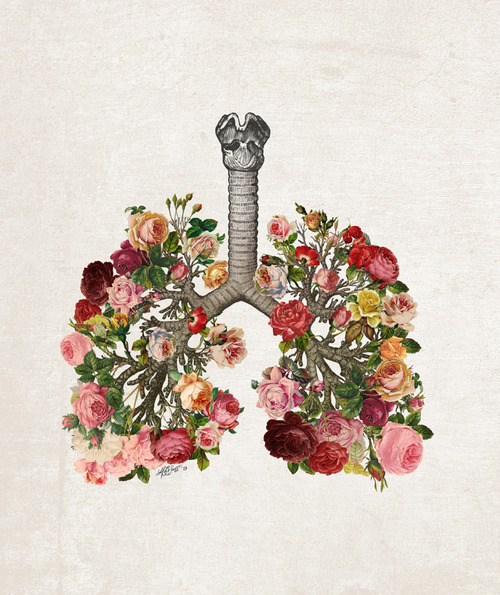
The Immune System Part 1
 time: 16:42:00
time: 16:42:00 Feel Amazing one-day-guide!
 time: 20:49:00
time: 20:49:00 IGspo .:. 9/2 13
 time: 02:01:20
time: 02:01:20 


 amyisrecovering
amyisrecovering  aurora_fitness
aurora_fitness  aurora_fitness
aurora_fitness  believe_in_health
believe_in_health  breakfastweekday
breakfastweekday  carrolundqvist
carrolundqvist  chrillanw
chrillanw  dedicationkristine
dedicationkristine  dorisldk
dorisldk  dorisldk
dorisldk  fffdedicated
fffdedicated  fredricblank
fredricblank  frokenelva
frokenelva  healthy_rabbit_habit
healthy_rabbit_habit
 healthyandfiit
healthyandfiit  healthyforme
healthyforme  kalsallad
kalsallad  kalsallad
kalsallad  kalsallad
kalsallad  karinlilja
karinlilja  lifeissweetlikecinnamon
lifeissweetlikecinnamon  lottanyberg
lottanyberg  manda_mandel
manda_mandel  melaniewijkhuisen
melaniewijkhuisen  nomyourself
nomyourself  pitiflautikah
pitiflautikah  shapemeup
shapemeup  siobhano_
siobhano_
 susannalevin
susannalevin  sweetpotatobri
sweetpotatobri  sweetpotatobri
sweetpotatobri  thatstarrylove
thatstarrylove  thedreambody
thedreambody  thedreambody
thedreambody  tovelouice
tovelouice  vanillawhirlwind
vanillawhirlwind  watch_me_shrink
watch_me_shrink  viiggshealthy
viiggshealthy  wishesforfitness
wishesforfitness  workformydreambody
workformydreambody  workformydreambody
workformydreambody  elnaelida
elnaelidaStay fit during school!
 time: 22:43:49
time: 22:43:49 
Förbered dina måltider i förväg
Se till att åka iväg till en livsmedelsaffär och storhandla ungefär varannan vecka! Ha dina måltider planerade i förväg för att göra det enklare - men se till att du inte kontinuerligt äter samma saker om och om igen! Det är viktigt att ta till variation i din kost. Så experimentera med nya recept och gör det till ett mål att prova något nytt åtminstone en eller två gånger i veckan!
Planera ut din träningsschema
Kanske ska du repa med bandet efter skolan eller så kanske du är medlem i en klubbverksamhet och du kan helt enkelt inte bara träna så fort du vill. Gå inte och oroa dig inte över detta! Sätt upp ett mål att träna eller få någon form av motion minst 3 dagar i veckan i 30 minuter. En härlig, rask promenad är ett utmärkt sätt att ta en paus från läxor!
Ha nyttiga snacks tillgängliga
Dra inte fram en Snickers-bar så fort du tar en paus eller kommer hem. Försök att ta med dig en portion av ditt egna hälsosamma mellanmål till skolan, eller ha endast hälsosamma mellanmål i ditt skafferi/kylskåp hemma. Ju mindre "skit" du har inom räckvidd, desto mindre kan du frestas att äta det. Om du måste gå till skolkafeterian, försök att undvika chips och godis och sök upp bättre alternativ. Ha alltid vatten med dig.
Stressa inte
Ju mer stressad du är, desto mer sannolikt är det att du ger upp. Allt är tillfälligt! Istället för grubbla och ta en tupplur, ta dig ut genom dörren och gå med din hund eller gör en rolig Youtube träningsvideo. Distrahera dig - allt ordnar sig alltid!
Sätt upp ett mål - och håll den under hela läsåret
Gå med i en sport eller delta i en pjäs! Lova dig själv att du kommer att göra en förändring på något sätt i år. Om du har ett viktminskningsmål, håll det! När du håller ditt huvud högt gör det saker och ting mycket enklare. Du vet att du vill - så bevisa för dig själv att du klarar av det!
How to create a new habit
 time: 20:04:00
time: 20:04:00 - Commit to Thirty Days – Three to four weeks is all the time you need to make a habit automatic. If you can make it through the initial conditioning phase, it becomes much easier to sustain. A month is a good block of time to commit to a change since it easily fits in your calendar.
- Make it Daily – Consistency is critical if you want to make a habit stick. If you want to start exercising, go to the gym every day for your first thirty days. Going a couple times a week will make it harder to form the habit. Activities you do once every few days are trickier to lock in as habits.
- Start Simple – Don’t try to completely change your life in one day. It is easy to get over-motivated and take on too much. If you wanted to study two hours a day, first make the habit to go for thirty minutes and build on that.
- Remind Yourself – Around two weeks into your commitment it can be easy to forget. Place reminders to execute your habit each day or you might miss a few days. If you miss time it defeats the purpose of setting a habit to begin with.
- Stay Consistent – The more consistent your habit the easier it will be to stick. If you want to start exercising, try going at the same time, to the same place for your thirty days. When cues like time of day, place and circumstances are the same in each case it is easier to stick.
- Get a Buddy – Find someone who will go along with you and keep you motivated if you feel like quitting.
- Form a Trigger – A trigger is a ritual you use right before executing your habit. If you wanted to wake up earlier, this could mean waking up in exactly the same way each morning. If you wanted to quit smoking you could practice snapping your fingers each time you felt the urge to pick up a cigarette.
- Replace Lost Needs - If you are giving up something in your habit, make sure you are adequately replacing any needs you’ve lost. If watching television gave you a way to relax, you could take up meditation or reading as a way to replace that same need.
- Be Imperfect – Don’t expect all your attempts to change habits to be successful immediately. It took me three independent tries before I started exercising regularly. Now I love it. Try your best, but expect a few bumps along the way.
- Use “But” – I was once told about this great technique for changing bad thought patterns. When you start to think negative thoughts, use the word “but” to interrupt it. “I’m no good at this, but, if I work at it I might get better later.”
- Remove Temptation - Restructure your environment so it won’t tempt you in the first thirty days. Remove junk food from your house, cancel your cable subscription, throw out the cigarettes so you won’t need to struggle with willpower later.
- Associate With Role Models - Spend more time with people who model the habits you want to mirror. A recent study found that having an obese friend indicated you were more likely to become fat. You become what you spend time around.
- Run it as an Experiment - Withhold judgment until after a month has past and use it as an experiment in behavior. Experiments can’t fail, they just have different results so it will give you a different perspective on changing your habit.
- Swish - Visualize yourself performing the bad habit. Next visualize yourself pushing aside the bad habit and performing an alternative. Finally, end that sequence with an image of yourself in a highly positive state. See yourself picking up the cigarette, see yourself putting it down and snapping your fingers, finally visualize yourself running and breathing free. Do it a few times until you automatically go through the pattern before executing the old habit.
- Write it Down – A piece of paper with a resolution on it isn’t that important. Writing that resolution is. Writing makes your ideas more clear and focuses you on your end result.
- Know the Benefits - Familiarize yourself with the benefits of making a change. Get books that show the benefits of regular exercise. Notice any changes in energy levels after you take on a new diet.
- Know the Pain – You should also be aware of the consequences. Exposing yourself to realistic information about the downsides of not making a change will give you added motivation.
- Do it For Yourself - Don’t worry about all the things you “should” have as habits. Instead tool your habits towards your goals and the things that motivate you. Weak guilt and empty resolutions aren’t enough.

- Engagera dig i trettio dagar - Tre till fyra veckor är all tid du behöver för att göra en vana automatisk. Om du klarar dig genom den inledande övningsfasen blir det mycket lättare att upprätthålla vanan. En månad är en bra tidsrymd när det gäller att engagera sig i en förändring eftersom den lätt passar in i din kalender.
- Gör det dagligen - Stadga är viktigt om du vill få en vana att fastna. Om du vill börja träna, gå då till gymmet varje dag under dina första 30 dagar. Genom att bara gå ett par gånger i veckan kommer det att bli svårare att utveckla det till en vana.
- Starta simpelt - Försök inte att helt förändra ditt liv på en dag. Det är lätt att bli över-motiverad och ta på sig för mycket. Om du vill plugga två timmar om dagen kan du tex försöka att först vänja dig vid 30 minuter och sedan bygga vidare på det.
- Påminn dig själv - Omkring två veckor in i ditt åtagande kan det vara lätt att glömma bort vad du gör. Placera ut påminnelser om att utföra din vana varje dag, annars är chansen stor att du kanske missar några dagar. Om du missar tid motverkarar det själva syftet vi började med - att fastställa vanan genom att utföra det varje dag i 30 dagar.
- Var metodisk - Ju mer metodiskt du utför vanan desto lättare blir det att hålla den. Om du vill börja träna, försök att göra det vid samma tid och på samma plats under dina 30 dagar. När detaljer som tid på dagen, plats och omständigheter är desamma i alla fall är det lättare att hålla fast vid det.
- Skaffa en polare - Hitta någon som kommer att göra det tillsammans med dig och som på så sätt kan hålla dig motiverad om du känner för att sluta.
- Bilda en provokation - En provokation är en ritual du gör precis innan du utför din blivande vana. Om du till exempel vill vakna tidigare kan detta innebära att vakna upp på exakt samma sätt varje morgon. Om du vill sluta röka kan du knäppa fingrarna varje gång du får lust att plocka upp en cigarett.
- Ersätt förlorade behov - Om du ger upp något vid bildandet av din nya vana, se till att på ett bra sätt byta ut eventuella behov som du förlorat. Om du genom att titta på tv fick ett sätt att slappna av, kan du prova meditation eller läsning som ett sätt att ersätta behovet.
- Var inte felfri - Förvänta dig inte alla dina försök till att ändra dina vanor kommer att lyckas omedelbart. Det tog mig tre oberoende försök innan jag började träna regelbundet. Nu älskar jag det. Gör ditt bästa, men förvänta dig några gupp på vägen.
- Använd "Men" - Jag fick en gång berättat för mig om denna fantastiska teknik för att ändra dåliga tankemönster. När du börjar tänka negativa tankar, använd ordet "men" för att avbryta dem. "Jag är inte bra på det här, MEN, om jag jobbar på det kan jag bli bättre senare."
- Plocka bort frestelser - Omstrukturera din miljö så att den inte kommer att fresta dig under de första 30 dagarna. Ta ur skräpmaten från ditt hus, säg upp kabel-tv prenumerationen, kasta ut cigaretterna osv så du inte behöver kämpa med din viljestyrka.
- Förknippa med förebilder - Tillbringa mer tid med människor som har de vanor som du vill spegla. En nyligen genomförd studie fann att genom att ha en överviktig vän var man mer benägen att själv bli det. Du blir vad du spenderar tid runt.
- Gör det som ett experiment - Undanhåll dina åsikter tills månaden har passerat och använd endast upplevelsen som ett beteende-experiment. Experiment kan inte misslyckas, de får bara olika resultat vilket kommer att ge dig ett annat perspektiv på hur du kan ändra din vana.
- Föreställ - Visualisera dig själv utföra den dåliga vanan. Därefter, visualisera dig själv skjuta undan den dåliga vanan och istället välja ett alternativ. Slutligen, avsluta sekvensen med en bild av dig själv i ett mycket positivt tillstånd. Se dig själv plocka upp cigaretten (ex), se dig själv lägga ner den och knäppa fingrarna. Slutligen - visualisera dig själv springa runt och andas utan problem (ex). Gör det några gånger tills du automatiskt går igenom detta mönster innan du utför den dåliga vanan.
- Skriv ner det - En bit papper med ett löfte på är inte så viktigt. Men att skriva löftet däremot är viktigt. Genom att skriva det gör du din idé tydligare och du fokuserar på ditt slutresultat.
- Var medveten om fördelarna - Bekanta dig med fördelarna av att göra denna förändring. Skaffa böcker som berättar om fördelarna med regelbunden motion (ex). Märk sedan dessa förändringar i efter att du till exempel börjat äta bättre.
- Var medveten om riskerna med att inte göra en förändring - Du bör också vara medveten om konsekvenserna som den gamla vanan kan lämna efter sig. Leta upp realistisk information om nackdelarna med att inte göra en förändring. Detta kommer förhoppningsvis att ge dig ytterligare motivation.
- Gör det för dig själv - Oroa dig inte om alla de saker du enligt alla andra "bör" ha som vanor. Tygla istället dina vanor mot ditt nya mål och de saker som motiverar dig. Skuld och tomma löften är inte tillräckligt.
Do these 9 things in your kitchen to lose weight
 time: 22:08:41
time: 22:08:41 
How to enjoy christmas
 time: 12:31:00
time: 12:31:00 


Holiday Reminders
 time: 16:56:00
time: 16:56:00 


The Importance of Sleep
 time: 12:04:10
time: 12:04:10  The replacement of ageing and dead cells, and the mending of muscle and other tissue.
The replacement of ageing and dead cells, and the mending of muscle and other tissue. The lowering of energy consumption.
The lowering of energy consumption. The recharging of the brain.
The recharging of the brain.Shoe business
 time: 22:52:12
time: 22:52:12 
Normal pronation: The outside part of the heel makes initial contact with the ground. The foot “rolls” inward about fifteen percent, comes in complete contact with the ground, and can support your body weight without any problem. The rolling in of the foot optimally distributes the forces of impact. This movement is called “pronation,” and it’s critical to proper shock absorption. At the end of the gait cycle, you push off evenly from the front of the foot.

A - Normal (medium) arch: If you see about half of your arch, you have the most common foot type and are considered a normal pronator. Contrary to popular belief, pronation is a good thing. When the arch collapses inward, this “pronation” absorbs shock. As a normal pronator, you can wear just about any shoe, but may be best suited to a stability shoe that provides moderate arch support (or medial stability). Lightweight runners with normal arches may prefer neutral-cushioned shoes without any added support, or even a performance-training shoe that offers some support but less heft, for a faster feel.
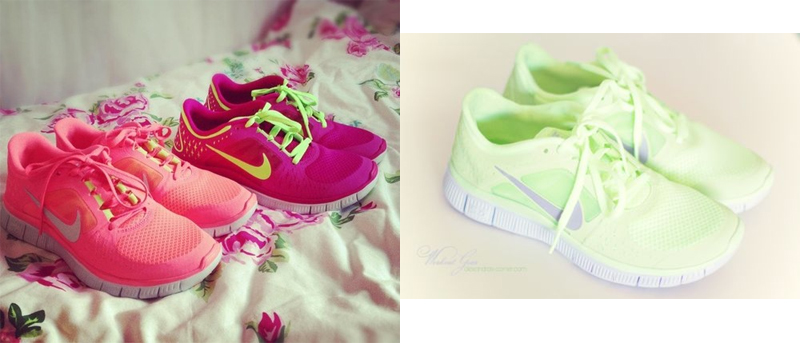

- How long have you been running?
- How much mileage are you doing?
- Where do you do most of your running?
- How much do you weigh?
- Are you aware of any foot problems, such as flat feet or over-/underpronation?
- Wear the socks that you plan on wearing while running. If you don’t have any, buy some moisture wicking socks beforehand.
- Your feet will expand while running, so opt for 1/2 to 1 size up from your normal, everyday shoes. You should aim to have at least 1 thumb width between your toes and the tip of the shoe. The key is to have the shoes fit not too snug, but also not too loose as to where your feet are sliding around.
- Both of your feet should be measure because a lot of people, including myself, have one foot that is slightly larger than the other. You should be fitted for the larger foot.
4 questions to ask yourself before you begin eating
 time: 17:47:16
time: 17:47:16 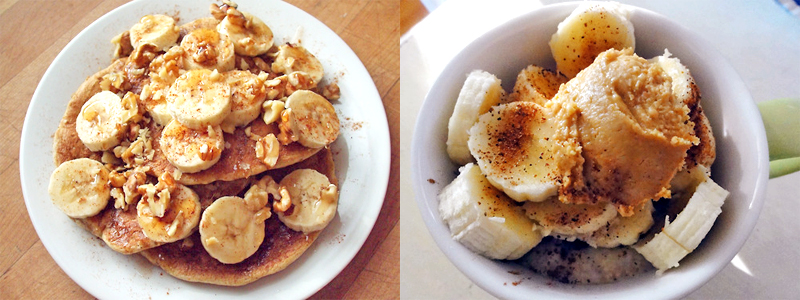

Steps to getting over a plateau
 time: 20:43:10
time: 20:43:10 - Keep the faith. You may feel stuck, but you're probably still losing weight - just not enough to register on the scale. (Hey - Even dropping a third of a pound per week means that in a year, you'll be down a whole 17 pounds.)
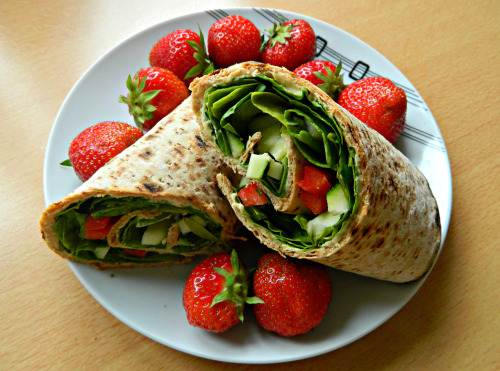
- Avoid fuzzy math. It's common to overestimate calories burned and underestimate calories eaten. Look for places where caloires may hide - dressings, spreads, sauces, croutons, and condiments. Keep a detailed food diary.
- Put up some resistance. Increasing physical activity is particularly useful for moving beyond a plateau, because exercise both uses calores and builds muscle.
- Trick your metabolism. Many fitness gurus claim that surprising your body with a change in diet, workout or both can shift you out of a weight loss rut. Change up your routine. If you are doing the same exercises over and over again, your body "knows" what to expect.

- Reboot and recharge. If your motivation is non-existent, write down all the reasons you originally wanted, and still want, to lose weight. Look at the list every day. Let friends and family know what you're up to, and ask for their support. Make a Vision Board with photos and words visualizing your successful body transformation.
Good habits are as addictive as bad habits, but much more rewarding
 time: 20:32:30
time: 20:32:30 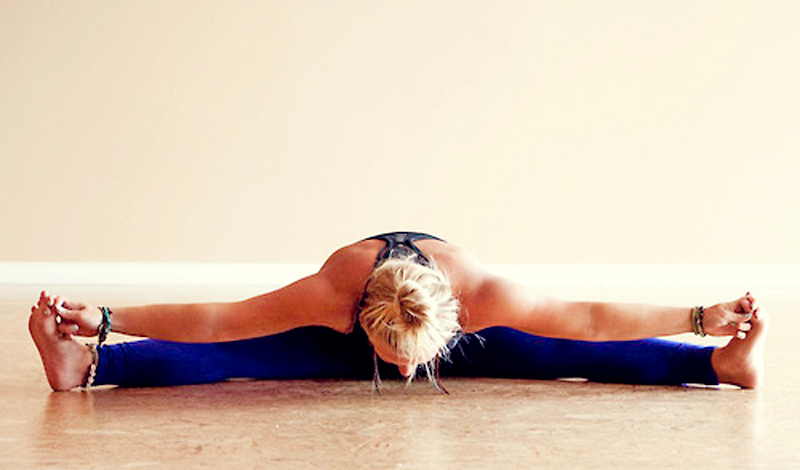


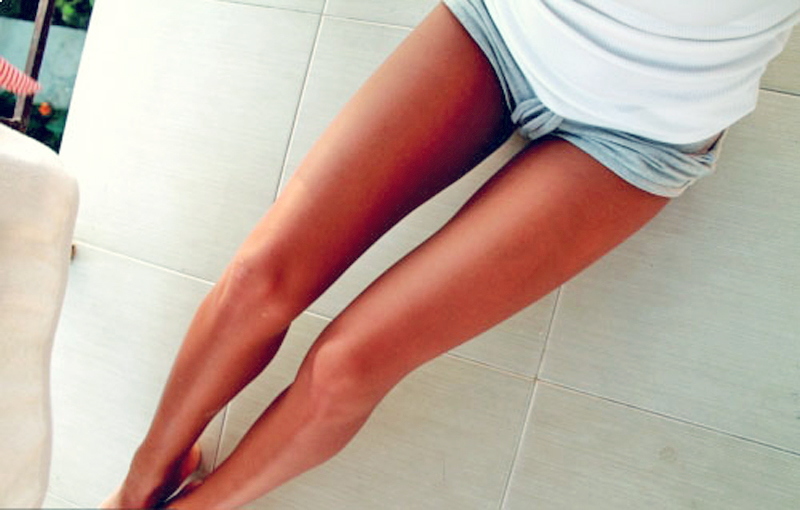


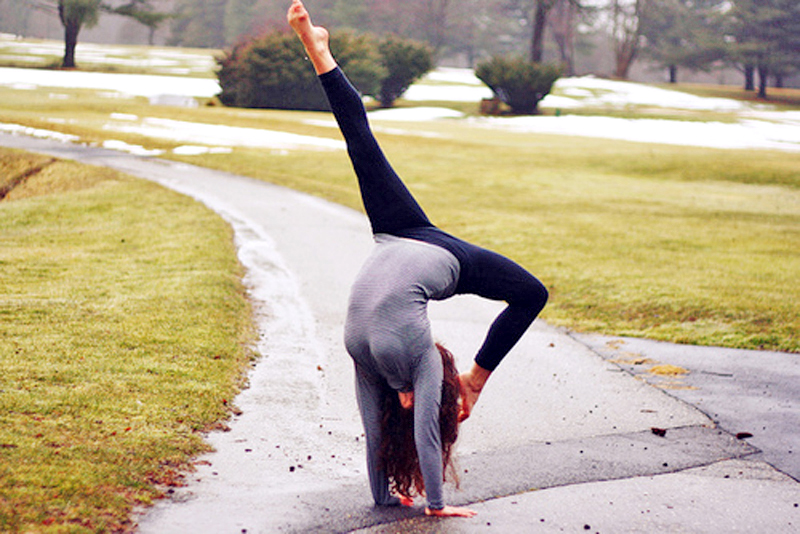


Weight Loss Basics
 time: 18:26:00
time: 18:26:00 


- Use the following formula:
- Next, we're going to factor in your activity level.
- Now, add that number to your BMR.


- Cardio
- Strength

Okay, that's all. WOW that's long. I hope you learned something if you actually had the patience to read the whole thing! Any questions, feel free to ask!
*Body beautiful, body healthy* formula
 time: 10:48:49
time: 10:48:49 



How long will it take for the results to come?
 time: 22:11:00
time: 22:11:00  Lift heavy weights.. or even moderate ones. If you want your muscle-building or "toning" results to take YEARS instead of months, by all means stick to the little 3 pound beauty bells. If you want results withing MONTHS or in some cases even WEEKS, lift heavy. Challenge yourself. Start with a weight you can lift for 8-12 reps with proper form. If you can do more than 12 reps, the weight is too light.
Lift heavy weights.. or even moderate ones. If you want your muscle-building or "toning" results to take YEARS instead of months, by all means stick to the little 3 pound beauty bells. If you want results withing MONTHS or in some cases even WEEKS, lift heavy. Challenge yourself. Start with a weight you can lift for 8-12 reps with proper form. If you can do more than 12 reps, the weight is too light.
 Eat CLEAN.. stop kidding yourself. I say that bluntly because many women (I myself am guilty) try to convince ourselves that things we do are okay or healthy. Those 100 calorie snack packs? They're not good for you and they're not doing your waistline any favors! Throw out the packaged, processed, junk food and stick to clean, natural, wholesome foods. You'll feel energized, healthy, and your body, skin and attitude will GLOW.
Eat CLEAN.. stop kidding yourself. I say that bluntly because many women (I myself am guilty) try to convince ourselves that things we do are okay or healthy. Those 100 calorie snack packs? They're not good for you and they're not doing your waistline any favors! Throw out the packaged, processed, junk food and stick to clean, natural, wholesome foods. You'll feel energized, healthy, and your body, skin and attitude will GLOW. Drink about 2 L water a day.
Drink about 2 L water a day. Stop drinking alcohol! If you're serious about your health and fitness, this won't be an issue.
Stop drinking alcohol! If you're serious about your health and fitness, this won't be an issue. Try to get your 8 hours of sleep.
Try to get your 8 hours of sleep. Keep stress levels low by finding ways to relax; meditation, yoga, bubble baths. When you're stressed, raised cortisol levels contribute to abdominal fat storage and can make your health and fitness goals slow considerably.
Keep stress levels low by finding ways to relax; meditation, yoga, bubble baths. When you're stressed, raised cortisol levels contribute to abdominal fat storage and can make your health and fitness goals slow considerably. Stay positive, there will be bumps in the road. You will make mistakes. But every time you "give up" you have to start over and it just sets you back more time. If you mess up a meal, fix it the very next meal!
Stay positive, there will be bumps in the road. You will make mistakes. But every time you "give up" you have to start over and it just sets you back more time. If you mess up a meal, fix it the very next meal!
Losing weight the healthy way has numerous benefits
 time: 19:11:17
time: 19:11:17  The weight will stay off. Your body has time to adjust to your new lifestyle. When you lose weight the unhealthy way, it won't stay off very long. Losing weight the healthy way is more permanent!
The weight will stay off. Your body has time to adjust to your new lifestyle. When you lose weight the unhealthy way, it won't stay off very long. Losing weight the healthy way is more permanent!
 If you lose weight the healthy way you have no chance to suffer from vitamins deficiencies or other deficiencies, being exhausted and/or other complaints, dehydration, etc.
If you lose weight the healthy way you have no chance to suffer from vitamins deficiencies or other deficiencies, being exhausted and/or other complaints, dehydration, etc.
 It doesn't weaken your immune system.
It doesn't weaken your immune system.
 When you eat healthy and versatile, your metabolism won't slow down. That way you keep burning calories.
When you eat healthy and versatile, your metabolism won't slow down. That way you keep burning calories.Fitness Success Formula
 time: 22:36:22
time: 22:36:22 

Calories explained!
 time: 22:45:05
time: 22:45:05  Calories are a measure of energy, we need energy to run basic metabolic functions.
Calories are a measure of energy, we need energy to run basic metabolic functions. Your body burns calories constantly to live, just breathing burns almost 1 calorie a minute!
Your body burns calories constantly to live, just breathing burns almost 1 calorie a minute! To lose ½ kg (1 pound/1 lb) you must burn 3500 more calories than you consume.
To lose ½ kg (1 pound/1 lb) you must burn 3500 more calories than you consume. By giving your body the time and energy it needs to lose FAT you can keep it off for good!
By giving your body the time and energy it needs to lose FAT you can keep it off for good! Your body works on an instant level, it doesn't know or care what your 24 hour intake is but it's easier for us to understand our intake looking at a 24 hour period.
Your body works on an instant level, it doesn't know or care what your 24 hour intake is but it's easier for us to understand our intake looking at a 24 hour period. Your body adjusts constantly to its needs based on what nutrition it's getting at that moment.
Your body adjusts constantly to its needs based on what nutrition it's getting at that moment. By eating small meals often you prevent your body from storing calories as fat and use them to their maximum potential. If you eat 3 meals a day at 450 calories each your body will store most of it as fat because it doesn't need 450 calories at one time. If you eat more often, 5-6 times a day, your body will USE the calories instead of storing them!
By eating small meals often you prevent your body from storing calories as fat and use them to their maximum potential. If you eat 3 meals a day at 450 calories each your body will store most of it as fat because it doesn't need 450 calories at one time. If you eat more often, 5-6 times a day, your body will USE the calories instead of storing them!
 Your BMR is the number of calories your body needs to survive through the day.
Your BMR is the number of calories your body needs to survive through the day.[4.35 x weight in pounds plus 4.7 x age in years plus 4.7 x height in inches plus 655 = how many calories your body needs a day simply to exist]
 A healthy calorie deficit is 500-1000 calories per day (that's ½-1 kg {1-2 pounds/lbs} per week).
A healthy calorie deficit is 500-1000 calories per day (that's ½-1 kg {1-2 pounds/lbs} per week). To create a calorie deficit find your BMR and do this equation:
To create a calorie deficit find your BMR and do this equation:







